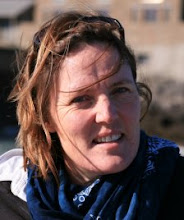Every so often there is a query about the
SQL Developer Exchange. (http://sqldeveloper.oracle.com) If you don't know about it, this is the site that we send SQL Developer and Data Modeler users to, in order to log feature requests, add reports and snippets. From the beginning its main function has been as a place to log feature requests and it serves as a really useful link between what we're planning in a release and what the community are looking for in the tool. Many users don't believe we use this site or take the requests into account, if you're one of them, you're much mistaken. In fact we changed plans to add in the SQL Developer 1.5 release based on all the feature requests that had come in.
I have now updated the filter on the Feature Requests page. This filters out all features that have been requested and are now in a release. To see them all, click the red filter cross to remove this filter.
Things to note: If you have logged more than one request in the feature and it's marked as "in release xxx", it may only be one of the features listed in the request that is in the release. It's easier for voters and for us, if you specify a single feature at a time and then give as much detail about what you have in mind. That way others can understand your request and support it or indeed, assign a low score to it.
Here's the list of Status values:
Scheduled for 3.0: This is scheduled for the next release. It means it's in the bug database and is assigned to a developer for the next release. This does not mean it will definitely be in the release, but it's got a good chance.
Accepted: This feature has been read, voted on and accepted as a future request. This means it is in the bug database, but is as yet unassigned, reviewed or written up. Some accepted features may make it into the next release, but not all will. For example, while fixing bugs for the patch release 2.1.1, the developers were able to clear up quite a few of the minor features requests that were related to the features they'd been working on. (See the latest
Bugs Fixed list on OTN.)
Under consideration: We've looked at it and we're still thinking about it. This is not yet in the bug database. The next time we do a feature request review we'll revisit these. To add visibility to these, please add more votes and more detail.
Awaiting Community Votes: Hmmm, you really want this feature? Let's hear from others first.
Rejected: Speaks for itself. Nope we're not doing this. See the comment posted on the feature. I sometimes reject duplicate requests, so see what the comment states. If it's a duplicate, find the other one and vote there.
BUG - Log in Metalink: Again, the explanation is in the status. Seems a bit harsh that we won't log the bug from here, but this is not the role of this forum and we don't want that to change. We ignore any bugs logged here.
Closed: This comment/request is no longer relevant. Alternatively you say something like "The product is slow" This is not helpful nor measurable. We also mark Exchange related requests with this.
The Feature Requests ReportsBy default the requests are filtered to show you only those requests that are not yet features of the product. Click the red filter cross to remove this filter and you'll be able to search on all requests. When I review the requests I often find quite a few requests for features that are in the product. This may well happen more as the product grows, so before you add a feature, look to see if it's not already been accepted or indeed, may already be in the product.
Dynamic Column OrderingThe interactive reporting in Oracle APEX also allows you to sort and filter the columns based on the column content. For example if you click on the Status column, there is a drop list that allows you to select a specific status or to set the order by on the column. When reviewing the requests, I set the status to Open, and then I order by the Weight. Features with zero weighting, means lows votes and so we generally focus on the high weight requests.
Using Actions on Interactive ReportsWhen using the Feature Requests page, you can use the interactive report capabilities. For example, click the little green cog next to the Go button, this invokes the action menu and select, for example "Selected Columns". You can use this include or exclude columns in the report. So you can add in the Product column, if you're just looking for the Data Modeler requests. This makes it easier to filter on the product.
Add New ReportsFinally, you can add your own filters and save them. To do this use the Actions menu to add a filter and then, using the same Actions menu, select Save Report. This means that the filter will be saved for you in a new report. Each report you save, gets saved as a new tab and so you can create a number of reports.
 In the image, I have circled the first two options. The filtering criteria can be set by using the additional drop lists.
In the image, I have circled the first two options. The filtering criteria can be set by using the additional drop lists.






